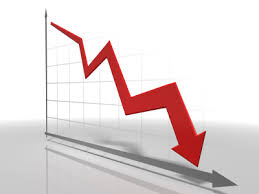Almost all employers have come to expect the proverbial annual rate increase from their health insurance company or stop loss carrier. It doesn’t matter whether it’s 2% or 20% – they just keep on coming.
If you read my article about the Rule Of 72 you know that it doesn’t take very long for your cost double.
Why do we continue to take it on the chin every year from insurance companies? Is it because we don’t think there’s a way to reduce cost? Or do both employers and employees just have come to expect that there’s going to be cost shift into employees and a higher cost to the employer?
What’s causing this increase every year? You probably keep hearing about trend as the primary factor plus overall utilization is up, or the cost of utilization, etc.
Frequency of care is one thing, and the increase of it will certainly cause costs to go up. But it’s when the cost of the service goes up so extraordinarily every year, that make it difficult to comprehend. it’s not logical or realistic. The increased cost of services far exceeds anything else that we purchase – tangible or intangible.
The two single largest increases in healthcare which translates to increases in health insurance costs come primarily from two sources – facility claims and prescription claims. Facility claims can be characterized as a hospital, imaging, dialysis, ambulatory surgical centers, etc. – which does not include professional (doctor) charges.
The other source of increased costs comes from prescriptions, primarily specialty drugs. Typically, specialty drugs can be defined as those that cost over $300-$350 a month. With most health plans, the cost of specialty drugs have reached approximately 40% of the entire drug spend, and it’s is going up, and up, and up.
So how are you to attack these ever increasing costs for facilities and prescriptions? One thing employers are realizing is that you can’t do it with your typical insurance company and/or a traditional PPO network. When an insurance company and/or PPO network claim that they have a big, big discount, what’s failed to be mentioned to the consumer or employer is that the hospital or facility continues to raise their prices so the “big” discount becomes absolutely meaningless. It’s smoke and mirrors. It’s a “discount off of what?”
There are over 5,000 specialty drugs under development that are truly wonder drugs, but are going to be so expensive for a plan to insure or self-insure that it will to be prohibitive to cover them in the plan. Take Humira for example – $65,000 per year. How many members on your plan are taking that drug? And that doesn’t include the medical cost of their condition. If you haven’t seen specific drugs excluded from your plan already, you will in the future.
There are 2 simple solutions that can help fix these issues. For the pricing of facilities, what needs to occur is to have pricing that’s not based on a phony “discount off of what?” It’s must be based on some sort of metric such as Medicare ‘plus’ or a facilities cost ‘plus’ that’s reported to the Federal Government, or some formula of bundled pricing – a fixed rate for more expensive procedures, for example.
Specialty drugs can be delivered at a significantly lower cost with innovative programs that are out there either through grants, foundations, Canadian purchasing and other specialty drug companies. This means that your typical PBM must give up control of where and when a member can purchase these drugs. PBMs typically want control because of the large rebate afforded to them.
If you want to learn more about how you can DECREASE your healthcare spend and thus your health insurance costs, call me at 970-349-7707 or email me at frank.stichter@strategichpc,com.


